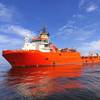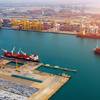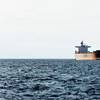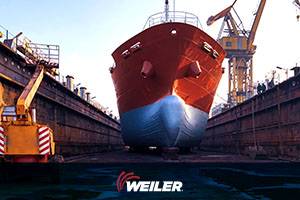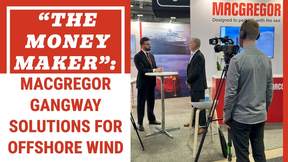Feature: Major Operators Adding OSVs at Record Pace
Although this has been considered an off year in the Gulf of Mexico from rig count and fleet utilization standpoints, it is another record year for major offshore operators expanding their fleets and the shipyards that are building these vessels.
Last year, over 50 supply boats were delivered and about an equal number of crew/supply vessels made their way into the fleets of operators. This year looks equally robust as vessels are being ordered in quantities of four, six and even 10.
This begs the question as to why offshore vessel operators are order record number of vessels if the business is sluggish? The answer is two fold: Deep water and deep gas.
Drilling activity is bound to increase based on these two factors industry leaders believe. While overall drilling activity has been down recently, drilling in deepwater is on the rise. The Minerals Management Service (MMS) reports that 12 new deepwater discoveries were made in 2002 and three of these in water depths greater than 8,500 ft.. In 2003, MMS predicts there will be 19 new projects in deepwater.
Top industry executives are also bullish on deep water. Shell Exploration and Production Co., CEO Walter van de Vijver called Great White, one of Shell's newest deep water finds "a project with enormous forward potential." Vijver considers the GOM to be "one of the key oil and gas exploration areas of the world."
Deepwater exploration calls for larger and faster supply and crew/supply vessels. Because these vessels have to travel further to reach the deepwater rigs, they need to be able to carry more liquids, more bulk and more cargo.
Deep gas also has a huge future. Basically, deep gas is the process of returning to older gas fields on the GOM Continental Shelf and drilling much deep than before…more than 25,000 ft. (over four miles) into the sea bed to find additional natural gas formations beneath those drilled 10-20 years ago. Better 3-D imaging techniques to find these elusive gas pockets and more powerful drilling equipment have merged to make deep gas recovery a "today" reality rather than a "tomorrow" possibility.
Spurring drilling activity for deep gas is coming from the United States Department of the Interior. Secretary Gale Norton has proposed royalty suspension incentives for companies who take the risk of exploring and developing deep gas deposits in shallow water areas they have already leased.
About 2,400 existing leases are targeted for royalty relief in this program if the leasee will drill 15,000 ft. or more below sea level searching for gas. The royalty suspension will cover the first 15 billion cu. ft. of gas recovered from wells between 15,000 and 18,000 ft. deep and on the first 25 BCF on wells drilled and completed below 18,000 ft.
Drilling for deep gas requires an entirely new breed of supply boat. Deep drilling rigs use far more liquid mud than shallower depth rigs, so vessels with very large mud tanks are in high demand. Here are profiles on a few companies that have significantly enhanced their OSV fleet:
Rigdon Marine
For example, Rigdon Marine LLC, a New Orleans-based startup company, has ordered 10 very capable 210-ft. supply boats with diesel electric power using a pair of the new Cummins QSR diesels rated at 2,000 hp each powering Z-drives. Bender Shipbuilding & Repair, Mobile, Ala. will build the vessels will built the vessels with DP-2 capability for superior station keeping, a necessity for supply vessels working around rigs and platforms. Financing for the $125 million deal is coming from Groupe Bourbon of France.
In the past, most startup companies purchase older vessels and replace them, as cash flow and credit would permit. Larry Rigdon, president of Rigdon Marine and former executive vice president of Tidewater Inc. saw things differently. "We wanted to start off with vessels that offered a technological advantage to those older vessels that were available," Rigdon said.
"Competing in today's environment in the Gulf is different than it was just a few years ago, Rigdon explained. "First, more of the drilling is happening in deepwater that needs more capable supply vessels that can operate under those conditions. Second, rules regarding station keeping are much more strict, so at least DP-1 and often DP-2 systems are required, " Rigdon said. "Going to market with out-of-date vessels doesn't make much sense," Rigdon added. Rigdon Marine's first supply vessel will be delivered in the first quarter of 2004, continuing though the third quarter of 2005.
Edison Chouest Offshore
No offshore operator has built more deepwater supply boats than Edison Chouest Offshore (EC0), Galliano, La. In the February 24 and May 17 issues of MarineNews, we reviewed the Laney Chouest, the largest anchor handler ever built. This 348-ft. vessel was purpose built to set suction piles and other platform anchors in water depths from 6,000 to 10,000 ft..
The vessel was chartered by Shell Oil Company and can not only set suction plies but has huge below deck tanks for drilling liquids and dry bulk.
Last year the company with shipyards in Larose and Houma, La built a series of five 260-ft. platform supply boats that are working in the Gulf. In 2003, ECO is building a series of five 280-ft. platform supply vessels, four of which have been chartered to Shell Oil Company.
The first vessel in the series, C-Leader, has joined the fleet. It has tanks for over 15,000 barrels of liquid mud and also has dedicated tanks for fuel oil, water and methanol. Methanol is a simple alcohol that is in increasing demand to keep crude oil flowing in the very cold temperatures found in deepwater pipelines.
Last year ECO also stretched an existing supply boat by 50 ft. solely to add methanol carrying capacity to the vessel.
ECO Senior Vice President Roger White believes the industry needs to take a fresh look at the way it categorizes supply vessels. "It used to be that a vessel's length was the determining factor on how big a supply boat was needed for a particular job," White said. Many oil companies figured that a 180-ft. boat could do a particular job while it may take a 220-ft. vessel or a 240-ft. vessel to do a bigger job.
"That's no longer the case," White believes. Now deadweight tonnage should be the overriding factor, A vessel can only carry so much weight at its load line, regardless of whether its liquid mud, fuel oil, water, deck cargo or whatever.
"The C-Leader class of vessels has a deadweight tonnage of 4, 830 long tons, twice as much as some vessels in the 220-240 ft. range," White indicated.
Hornbeck Offshore Services
It was Hornbeck President Todd Hornbeck who more than a year ago predicted that his company would "need more supply boat capacity in later 2003 and beyond." That quote was widely heralded as a very good omen for future supply boat construction. Hornbeck backed up that announcement with the news that they would build eight more supply boats with the first four being delivered in 2003 to join their fleet of a dozen other deepwater offshore supply vessels.
LEEVAC Industries LLC, Jennings, La. was awarded the contract for the first four of these vessels. The 240-ft. HOS Bluewater was delivered in March 2003 and the other three are slated for delivery "on three month intervals with the next vessel HOS Gemstone due out in June," according to Troy Skelton, sales manager for LEEVAC.
These vessels are an improved version of the four 240-footers LEEVAC has delivered during the past two years. Two of those vessels, HOS Innovator and HOS Dominator were completed as ROV support vessels and chartered to SonSub, Inc., Houston, Texas.
Although the major mission of these two vessels is ROV support they, like the other 240-foot OSVs in the fleet, have significant supply capacities including over 8,000 barrels of liquid mud, 114,000 gallons of fuel oil and 6,240 cu. ft. of dry bulk plus a large aft open deck for cargo and DP-2 capable.
Deep Gas
There are a number of supply boats being built specifically for deep gas drilling on the Continental Shelf. Large mud tanks and DP capability characterize these new vessels. For example, the new 207-ft. series of supply boats being built by Bollinger have liquid mud capacity over 6,000 barrels and are rated by ABS as DP-1 capable.
MNM Boats of Golden Meadow, La has taken delivery of two of these vessels Bollinger will deliver three to an undisclosed customer and four to Tidewater. With new deep gas initiatives being offered by the Federal Government, no doubt more such vessels will be built.
Houma Fabricators, Houma, La. (now a part of Shipyard de Hoop of the Netherlands) has six 187-ft. diesel electric vessels under construction for Otto Candies, LLC, Des Allamands, La. These vessels are also destined to work the shelf in support of deep gas drilling.
Since the deep gas market is still in its infancy, not as many vessels designed to support this type of drilling have been developed as has been for deepwater, whose advantages have been known for several years. Of course deepwater vessels can also work the closer in deep gas markets and no doubt many of them will as deep gas drilling heats up over the next few years.



